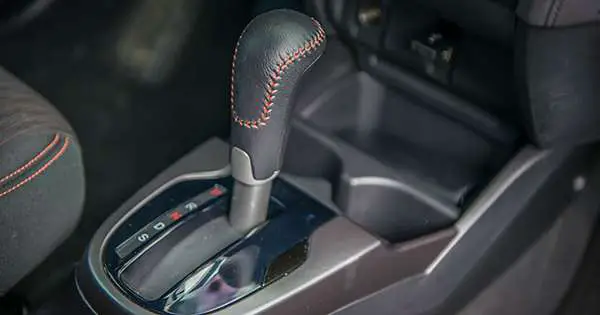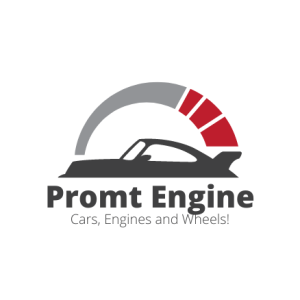In today’s world, cars are subject to some awkward rules meant to keep drivers safe. These controls are now equipped with even most new vehicles, like the ability to lock the door without a key or put your car in neutral when it is time to refuel. Though these inventions may prove helpful, they can also become dangerous if misused.
When you shift your gear to drive, the car stays in the same gear until you specifically put it into a park—can somebody explain why this is so?
When you shift to drive, the car automatically shifts into first gear. It stays in first gear until you push on the brake hard enough to disengage it and change to neutral, second, third, and so on.

What happens if you put your car in park when you are driving?
Putting your automatic transmission car in park when you usually drive will not cause any damage. This is because in an automatic car, you will hear a clicking noise, and the parking mechanism will attempt to slide into gear, but your vehicle will not enter the park until your car stops moving. However, if you have a manual transmission and put your car in park, you can damage the car and cause a car accident.
If you put your car into park while it’s still moving, it locks the tires to keep them from moving. This can cause you to have a tough time pushing on the gas pedal and getting the car to go where you want it to go. A vehicle is made this way because if your car’s engine stalls while going down the road, your wheels will also stop turning. This makes it harder to steer the vehicle, and you could lose control if your tires stop moving.
Sometimes, putting your car into park while still rolling can damage the transmission. If this happens, you will likely need to take your vehicle into a shop for repairs because parts may be broken now that the shifter isn’t in the incorrect position when the car has stopped.
Can You Put a Car in the Park While Driving?
You can put a car in park while driving by mistake, but it is not recommended. Usually, you will be protected from car damage if you have an automatic transmission. However, if you have a manual transmission, this practice can damage your car and cause a car accident.
If you were to shift the gear selector into the park while your car was still moving, it wouldn’t stop for a few seconds because it’s not designed to do that.
When you put a car in park while it’s still moving, the tires stop rolling as soon as you push the brake pedal all the way down while also pushing the park button. You do these two things: your car will be in the park and hopefully not move anymore or too much.
If you don’t put your car into park correctly while it is still rolling, a few things could happen. One of them is that your engine could stall out from being in an awkward position. Another bad thing that can happen is that your tires will get locked up, and you won’t be able to go anywhere because the car’s power will not let you move.
The next problem is that your transmission could be damaged if it isn’t put into the park correctly while moving. This will make it harder for your car to move forward if you press the gas pedal, which can cause accidents.
Let us see what happens when you put the car in reverse while driving:
When I put my car in reverse, it jerks!
If you put your car in reverse and then the car jerks, usually the problem is your gearbox or synchronizer might have worn off. Usually, your car’s gear teeth have alignment issues.
If you put your car into reverse while it is still rolling, a few things could happen. One of them is that your tires will lock up and get stuck. This could cause you to lose control of your car if it isn’t going where you want it to go, or you can even hit something in front of you.
Another bad thing if you put a car into reverse while still rolling is that your transmission could be damaged. This will make it harder for your car to go forward if you press the gas pedal, which can cause accidents.
The last bad thing is that your engine could stall because the shifter isn’t correct. Once this happens, your car won’t move and will likely need repairs from a shop.
What happens if you put your car in neutral while moving?
If you put your car in neutral while moving, the motor speed will go down to idle, and the transmission will cut fuel to the engine so that it doesn’t get the proper lubrication to run smoothly. This process can damage the car.
Many drivers tend to neutralize their car when they don’t want it to move anymore. You can put your car in neutral while still moving and have no problems in some vehicles. However, a few things could go wrong if you do this.
One bad thing that might happen if you put a car into neutral while still rolling is that your engine could stall. This will make your vehicle unable to move because the shifter isn’t being put into its correct position, which can cause you problems if you are in heavy traffic or somewhere with many pedestrians.
Another bad thing that might happen is that your tires lock up and get stuck. If your car isn’t going where you want it to go, this could cause you to lose control of it, or you could even hit something in front of you.
The last bad thing that might happen is that your brakes will give out because the steering wheel can get locked up from being awkward. Once this happens, your car won’t stop, and you could hit something or someone if this happens while you are driving.
Why does my car move forward when in a park?
Your car moves forward when you are in a park because the parking pawl swings towards the output shaft, and it is normal for your vehicle to move a few inches. This movement is natural because there is “play” between parts in your car. Usually, pace between the tooth on the park pawl and the tooth on the cog “rolls out,” and your car’s weight and gravity are the leading causes of this movement.
Your car’s computer doesn’t allow the shifter to be put into the park unless it is in a specific position that will allow your car to move forward.
When you take your foot off the brake and press on the gas, your car goes into drive. Usually, when cars drive, they start moving forward because the brake is not pressed. When there isn’t anything pressing down on the brake, and you press on the gas, your car goes forward because it thinks you want to drive somewhere.
Your car’s computer knows everything is safe and sound when in a park and not moving. It won’t let your car drive out of the park because it isn’t where you are the safest. Your vehicle will only move when you tell it to go somewhere and press on the gas pedal simultaneously, but your car won’t allow this unless it is in a particular position for safety reasons.
Do you put it in the park before the handbrake?
No, I do not put in the parking brake before the handbrake. The correct way is to stop your car with your primary brakes in the first step and then set the emergency brake. Finally, you should park your vehicle before turning off your engine.
There are a few different schools of thought on what you should do first: put the car in park or pull the handbrake up.
Some believe you should always put your car into the park first and then apply the handbrake. There is a reason for this, which will depend on the age of your vehicle and its make and model.
Older cars and some newer ones were designed and created with the idea that the handbrake should always be applied before putting your car into park. This is because if you put your vehicle into the park first, then it could cause damage to the transmission or even the engine.
This works by having a ball-and-socket shifter. If you put your car into the park first, the socket will not be in the correct position and will not give it a positive lock.
If you applied the handbrake first instead of putting the car into the park first, you wouldn’t have a problem with your shifter. The handbrake will take care of the shifter for you and ensure everything is in the correct position before you start driving.
Now you know why shift position indicators are essential. If they are not working, this could pose a significant safety hazard. You can save money by ensuring your car is in the correct gear before driving off. This will help prevent damage to transmissions and engines, saving money in the long run.
Can You Tow a Car in the Park?
No, you should not tow a car in the park because you can damage the stop-park system. However, you can tow a car in the park if you have an automatic transmission that can activate the mechanical lock if towed with wheels on the street. Towing a vehicle in the park can usually cause damage to most car models.
